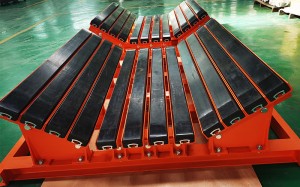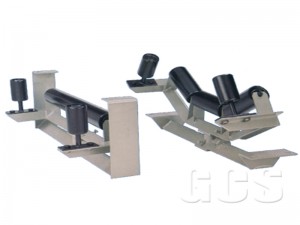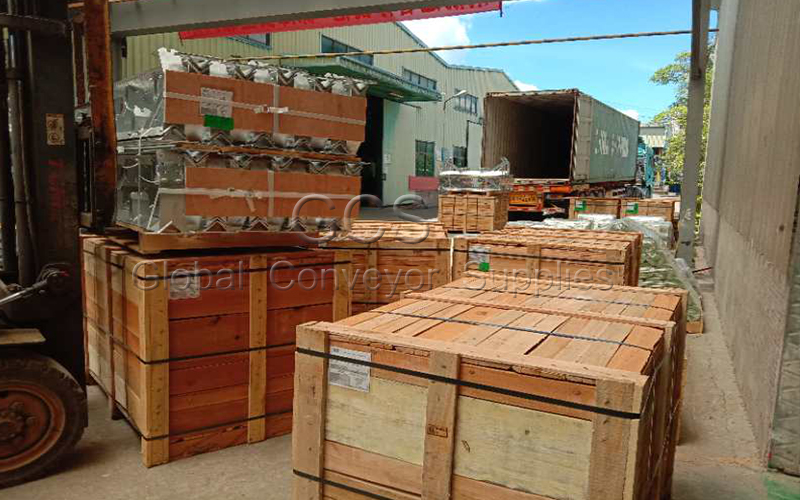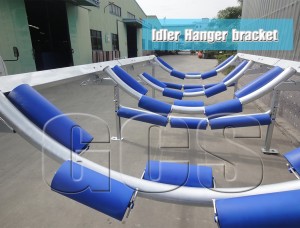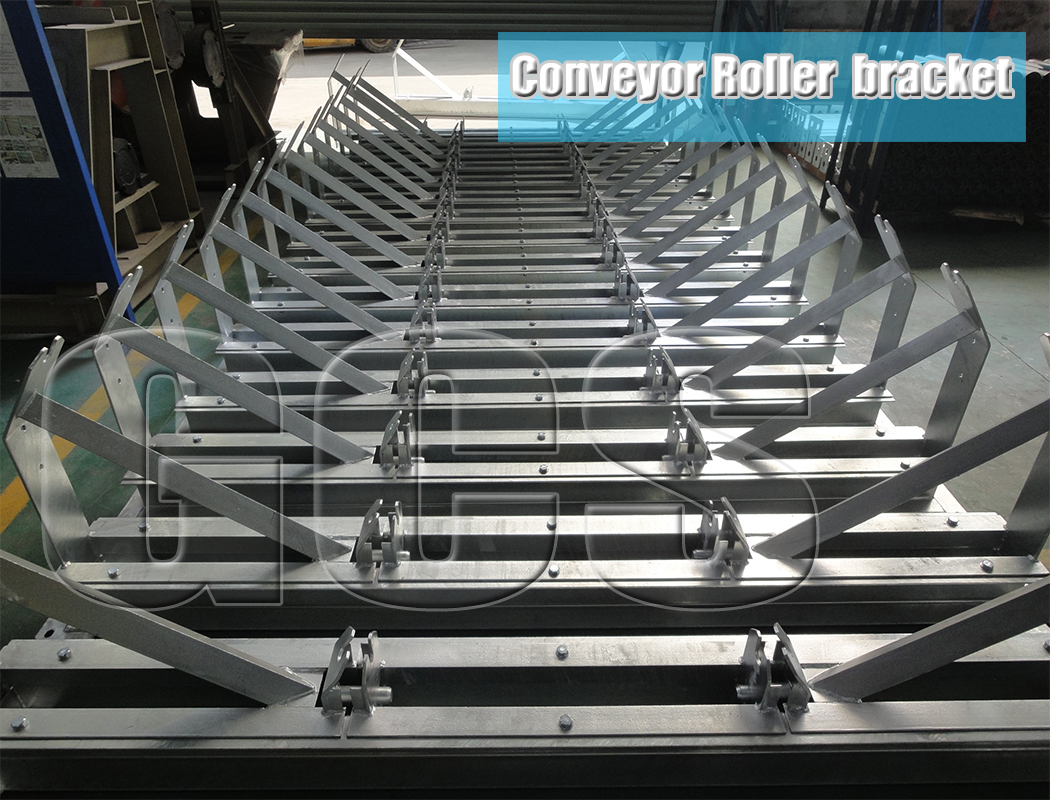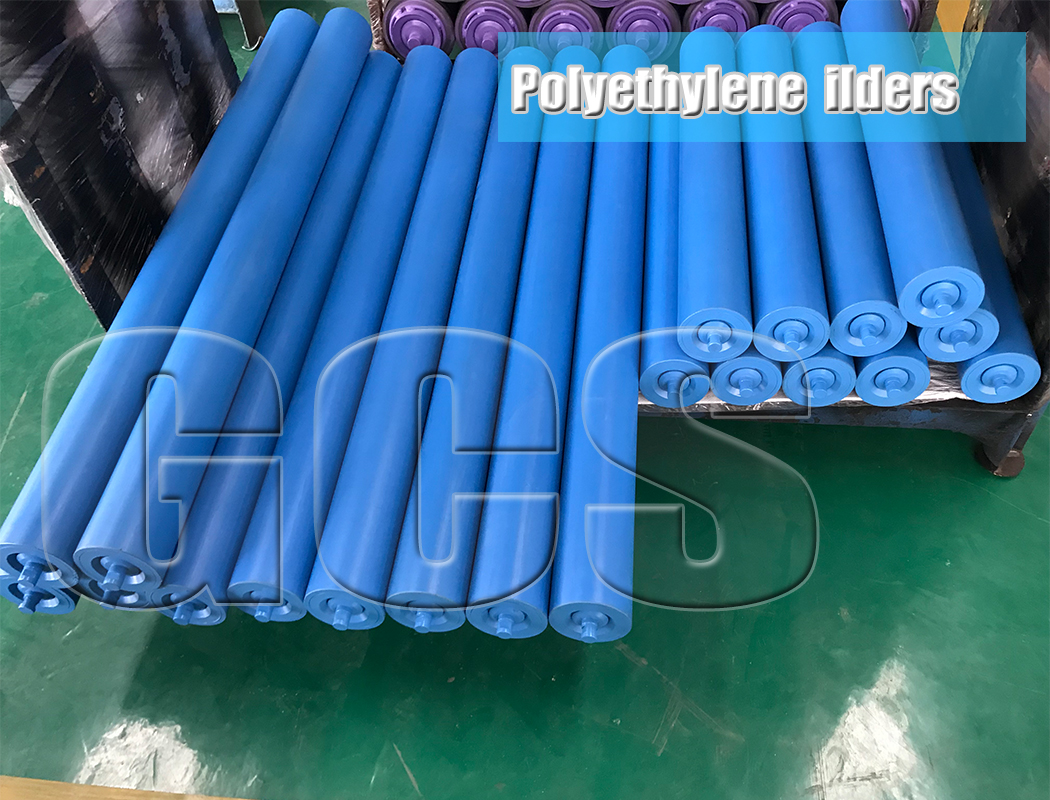Conveyor equipment
The conveyor idler equipment is in a certain line of continuous transmission of material handling machinery, also known as continuous conveyor equipment. Conveyor equipment can carry out horizontal, inclined, and vertical transmission, but also can form a space transmission line, the transmission line is generally fixed.
Catalog
1. Equipment Composition
2. Main Parameters
3. Operating Rules
Equipment Composition
The general belt conveyor equipment is composed of a conveyor belt, idler, roller and driving, braking, tensioning, reversing, loading, unloading, cleaning, and other devices.
①Belt conveyor
There are two commonly used rubber belts and plastic belts. The rubber belt is suitable for operating temperatures between -15 °C and 40°C. The temperature of the material does not exceed 50°C. The inclination Angle of conveying bulk material upward is 12° ~ 24°. For large dip Angle delivery available pattern rubber belt. Plastic belt with oil, acid, alkali, and other advantages, but poor adaptability to climate, easy to slip and aging.
②Roller
Groove roller, flat roller, aligning roller, buffer roller. Trough roller (composed of 2 ~ 5 rollers) supporting bearing branches for conveying bulk materials; The aligning roller is used to adjust the horizontal position of the belt to avoid deviation; The buffer roller is installed at the receiving place to reduce the impact of the material on the belt.
③Drum
Groove roller, flat roller, aligning roller, buffer roller. Trough roller (composed of 2 ~ 5 rollers) supporting bearing branches for conveying bulk materials; The aligning roller is used to adjust the horizontal position of the belt to avoid deviation; The buffer roller is installed at the receiving place to reduce the impact of the material on the belt.
④Tension device
Its function is to make the conveyor belt achieve the necessary tension, so as to avoid slipping on the driving drum and make the conveyor belt deflection between the rollers to ensure that in the specified range.
Conveyor equipment according to the mode of operation can be divided into:
1: belt conveyor equipment
2: screw conveyor equipment
3: bucket elevator
Main Parameters
Generally, the main parameters are determined according to the requirements of the material handling system, the various conditions of the material handling site, the relevant production process, and the characteristics of the material.
①Conveying capacity: conveying capacity of conveyor equipment refers to the amount of material transported per unit of time. When conveying bulk materials, calculated by the mass or volume of conveying materials per hour; In the delivery of items, it is calculated by the number of pieces per hour.
②Conveying speed: Increasing conveying speed can improve conveying capacity. When the conveyor belt is used as the haulage part and the conveying length is large, the conveying speed increases gradually. However, the high-speed belt conveyor equipment needs to pay attention to vibration, noise, starting, braking, and other problems. For the conveyor equipment with the chain as the traction part, the conveying speed should not be too large to prevent the increase of dynamic load. Conveyer equipment for process operation at the same time, the conveying speed should be determined according to the production process requirements.
③Component size: the component size of conveyor equipment includes conveyor belt width, slat width, hopper volume, pipe diameter, and container size. The dimensions of these components directly affect the conveying capacity of conveyor equipment.
④Conveying length and inclination Angle: conveying line length and inclination Angle directly affect the total resistance of conveyor equipment and the power required.
Operating rules
1. Fixed conveyor equipment should be installed on a fixed basis in accordance with the prescribed installation method. Mobile conveyor equipment before the formal operation should be the wheel with a triangular wood wedge or brake. In order to avoid walking in the work, there are many conveyor equipment parallel operations, between the machine and the machine, there should be a channel of one meter between the machine and the wall.
2. Conveyor equipment before use to check the running part, belt buckle, and the bearing device is normal, protective equipment is complete. The tightness of the tape must be adjusted to an appropriate degree before starting.
3. Belt conveyor equipment should be the no-load start. Material can be fed after normal operation. No feeding before driving.
4. A number of conveyor equipment running in series, should start from the unloading end, sequence. After all normal operations can feed.
5. When the tape deviates in operation, it should be stopped and adjusted. It should not be used reluctantly, so as not to wear the edge and increase the load.
6. The working environment and the temperature of the material to be delivered shall not be higher than 50℃ and lower than -10℃. Materials containing acid and alkaline oils and organic solvents shall not be transported.
7. No pedestrians or passengers are allowed on the conveyor belt.
8. Before parking, must stop feeding, and wait for the belt to unload the material before stopping.
9. The motor of conveyor equipment must be well insulated. Mobile conveyor equipment cable, not disorderly pull and drag. The motor should be grounded reliably.
10. When the belt slips, it is strictly forbidden to pull the belt by hand to avoid accidents.
Successful Cases
GCS reserves the right to change dimensions and critical data at any time without any notice. Customers must ensure that they receive certified drawings from GCS prior to finalizing design details.
Post time: Mar-07-2022

